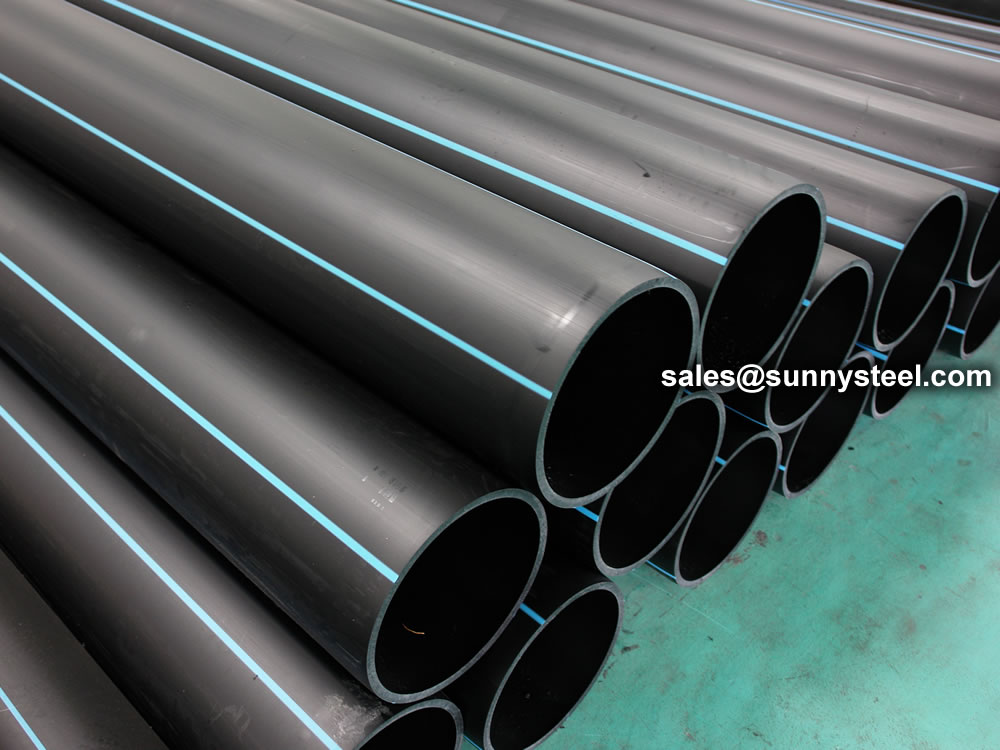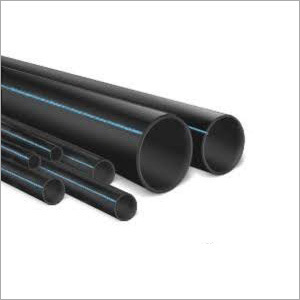Explore the Manufacturing Refine Behind High-Quality HDPE Pipeline and Its Applications
The production procedure of premium HDPE pipes is elaborate and systematic. It begins with the choice of basic materials that enhance efficiency. Following this, ethylene undertakes polymerization to develop material, which is after that formed with extrusion. Quality control is vital, making certain that the end product fulfills strict standards. Nevertheless, the trip of HDPE pipes doesn't finish with production. Their applications across various industries reveal a wider significance worth examining.
Understanding HDPE: Qualities and Advantages

High-density polyethylene (HDPE) is a functional polycarbonate known for its sturdiness and resistance to numerous environmental variables. This product shows outstanding tensile strength, making it suitable for requiring applications. Its low-density framework contributes to a light-weight product, assisting in convenience of managing and installation. HDPE also showcases amazing resistance to chemicals, which minimizes destruction when revealed to severe materials.
The product's reduced moisture absorption additionally improves its durability, making it ideal for use in pipelines and tank. Furthermore, HDPE is resistant to ultraviolet (UV) radiation, ensuring that products keep their honesty even when exposed to sunlight. Moreover, its versatility permits the creation of complex forms without compromising stamina. The environmentally friendly nature of HDPE, commonly stemmed from recycled materials, contributes to its charm, advertising lasting methods in production. On the whole, these buildings and benefits make HDPE a recommended selection for numerous commercial and consumer applications.
Basic Material Choice for HDPE Production
The selection of raw materials for HDPE production is vital to confirm the end product satisfies the preferred specs and high quality standards. High-density polyethylene (HDPE) is mainly produced from polymerized ethylene, originated from nonrenewable fuel sources such as gas or unrefined oil. The high quality of these feedstocks greatly influences the mechanical and thermal properties of the final HDPE.
Ingredients also play a significant function in improving HDPE's performance, consisting of anti-oxidants, UV stabilizers, and colorants, which improve toughness and resistance to environmental elements. The option procedure have to think about not just the chemical make-up of the raw products but additionally their processing features to ensure reliable manufacturing.
Moreover, the sourcing of raw products must prioritize sustainability and conformity with environmental laws, as accountable techniques are essential in today's market. Ultimately, mindful resources option lays the structure for producing top notch HDPE pipes appropriate for diverse applications.
The Extrusion Process: Shaping HDPE Pipeline
The extrusion procedure plays an important duty in shaping HDPE pipelines, starting with precise product prep work strategies that guarantee suitable circulation and uniformity. Similarly important is the style of the die, which straight affects the last measurements and surface area top quality of the pipe. Together, these variables add considerably to the efficiency and high quality of HDPE pipe production.
Material Preparation Methods
Efficient production of HDPE pipes begins with thorough product prep work strategies, particularly the extrusion process. Throughout this phase, high-density polyethylene material is initial dried out to remove moisture, ensuring suitable circulation characteristics. The resin is after that fed right into the extruder, where it undertakes home heating and melting, changing right into a thick state. This home heating process is very carefully controlled to maintain the product's honesty and performance. The molten HDPE is forced via a die, shaping it right into a continual pipeline kind. Appropriate temperature monitoring throughout extrusion is vital, as it directly influences the material's properties and the last product top quality. Once shaped, the HDPE pipeline is cooled and cut to defined lengths, all set for succeeding processing and applications.
Die Style Value
Precision in die design plays an important role in the extrusion process of HDPE pipelines. The die acts as the final shaping tool, straight influencing the pipeline's measurements, wall surface thickness, and surface coating. A well-designed die assurances uniform product flow, lowering flaws such as irregularities and vulnerable points. The geometry of the die have to be enhanced to suit the certain buildings of HDPE, including its viscosity and thermal actions during extrusion. Additionally, the cooling price of the product as it travels through the die can noticeably impact the pipeline's architectural integrity. As a result, purchasing innovative die innovation is essential for makers intending to produce top notch HDPE pipes that satisfy sector standards and client assumptions.
Quality Assurance Steps in HDPE Manufacturing
Although various variables influence the quality of HDPE pipeline production, reliable quality assurance procedures are essential to guarantee uniformity and dependability in the last product. Key quality assurance practices consist of extensive material evaluation, confirming that the raw polyethylene meets recognized requirements for purity and density. Throughout the extrusion procedure, parameters such as temperature level, stress, and cooling time more info are closely kept an eye on to keep dimensional accuracy and structural stability
In enhancement, post-production screening is important; makers typically conduct hydrostatic examinations to assess the pipe's strength and resistance to pressure. Aesthetic examinations for surface area defects even more improve quality control. Qualification from pertinent requirements companies, like ASTM or ISO, gives an extra layer of reliability. By implementing these complete quality assurance measures, producers can decrease defects, boost performance, and make certain that the HDPE pipelines fulfill the particular requirements of various applications, inevitably causing client fulfillment and depend on in the item.
Applications of HDPE Pipe Across Industries
HDPE pipelines are made use of throughout various sectors as a result of their toughness and versatility. In water distribution systems, they assure reliable distribution, while in wastewater management, they give trusted services for waste transport. Furthermore, agricultural watering networks take advantage of HDPE's resistance to rust and adaptability, making it an ideal selection for contemporary farming practices.

Water Distribution Systems
A substantial number of markets rely on high-density polyethylene (HDPE) pipes for effective water distribution systems. Understood for their sturdiness and resistance to corrosion, HDPE pipes are commonly used in local water system networks, agricultural irrigation, and industrial applications. Their light-weight nature helps with simple handling and setup, minimizing labor expenses and time. Furthermore, HDPE pipelines can accommodate various pressure levels, making them ideal for both reduced and high-pressure systems. hdpe pipe suppliers Midland TX. The adaptability of the material enables seamless combination into existing facilities, lessening the requirement for extensive excavation. HDPE's resistance to chemical leaching guarantees that the water provided continues to be safe and tidy, making it an excellent selection for maintaining the top quality of safe and clean water across numerous fields.
Wastewater Management Solutions
Reliable water circulation systems additionally lead the way for innovative wastewater administration options, where high-density polyethylene (HDPE) pipes play a considerable function. Prominent for their sturdiness and resistance to corrosion, HDPE pipes are excellent for delivering wastewater in numerous setups. Their adaptability permits very easy installation in intricate environments, reducing the need for considerable excavation. Additionally, HDPE's smooth indoor surface minimizes rubbing, enhancing circulation prices and efficiency. These pipes are additionally immune to chemical leaching, guaranteeing that pollutants do not endanger the surrounding environment. Industries, towns, and therapy centers increasingly rely on HDPE pipelines for their reliability and long life, making them a preferred option for contemporary wastewater administration systems. This adaptability underscores the crucial importance of HDPE pipes across countless applications.
Agricultural Watering Networks
Agricultural watering networks benefit considerably from the usage of high-density polyethylene (HDPE) pipes, which offer efficient and reliable water distribution to crops. HDPE pipelines are light-weight, making them easy to deliver and install, while their flexibility permits for different setups in diverse terrains. These pipelines demonstrate excellent resistance to corrosion, chemicals, and UV radiation, ensuring sturdiness in harsh farming environments. Additionally, their smooth indoor surface area reduces rubbing loss, maximizing water flow and decreasing energy prices related to pumping. The long life of HDPE pipes, usually going beyond half a century, contributes to decrease maintenance and substitute costs. Farmers significantly depend on HDPE pipelines to enhance irrigation effectiveness and promote lasting farming techniques, ultimately leading to enhanced plant returns and resource preservation.

Future Fads in HDPE Pipeline Modern Technology
As the demand for sustainable and efficient infrastructure grows, developments in HDPE pipe innovation are poised to change various sectors. Arising patterns consist of the combination of wise innovations, such as sensing units and IoT capabilities, which assist in real-time monitoring of pipe conditions, lowering maintenance costs and protecting against leaks. Furthermore, the development of innovative manufacturing strategies, such as 3D printing, is enabling the manufacturing of complicated, customized pipeline styles that satisfy details project requirements.
The emphasis on recycling and round economic situation practices is driving the innovation of HDPE pipes made from recycled materials, improving sustainability. Improved jointing techniques, such as electro-fusion and mechanical installations, are also enhancing installment performance and reliability. The expanding emphasis on environmental guidelines is pushing suppliers to take on greener manufacturing processes, guaranteeing that HDPE pipelines not just fulfill sector criteria yet additionally cultivate a more sustainable future for infrastructure development.
Regularly Asked Inquiries
Exactly How Does HDPE Compare to Other Plastic Products?
HDPE surpasses many other plastic products relating to longevity, chemical resistance, and adaptability. Its reduced thickness and high tensile toughness make it suitable for different applications, usually surpassing choices in both efficiency and durability.
What Are the Environmental Effects of HDPE Production?
The ecological impacts of HDPE manufacturing consist of greenhouse gas exhausts, energy consumption, and possible air pollution from producing processes. Furthermore, incorrect disposal can lead to soil and water contamination, raising problems regarding long-lasting ecological results.
Can HDPE Pipeline Be Reused?
Yes, HDPE pipes can be reused. Numerous centers accept used HDPE for handling, transforming it right into brand-new products. This recycling adds to sustainability initiatives, lowering plastic waste while saving resources and power in the manufacturing cycle.
What Is the Lifespan of HDPE Piping?

Exactly How Do Temperature Variations Influence HDPE Pipeline Efficiency?
Temperature level variations greatly impact HDPE pipe performance, influencing adaptability and toughness. High temperatures can cause softening, while reduced temperatures might trigger brittleness, ultimately affecting the pipeline's longevity and viability for various applications in varied settings.